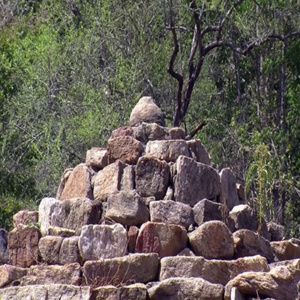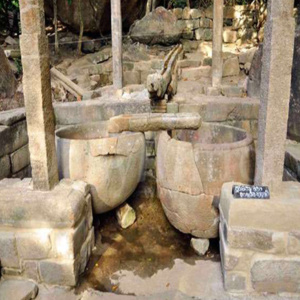


rajagala-kanda
rajagala-kanda-monastery
rajagala-kanda-srilanka
This sacred place is in the Rajagalatenna village in Uhana District Secretariat Division. Ampara District in the Eastern Province. In the past Rajagala know as Rassahela was one of the premier monastic complexes in Sri Lanka. That emerged since the advent of Arahant Mahinda.
The earliest inscription found at Rajagala names the place as “Dhana Tisa Pavata”. However an inscription scribed later, refers to it as “Ariya Araka Girikubilapi Tisa Pavata Maha Vahara”. Which when translated reads as the Ariyakara Girikumbhilavapi Tissa Pabbata Vihara. In another inscription of King Mahinda II found in the sacred area identifies the temple as Arittara Vehera. In the great chronicle Mahavamsa it was say that when Prince Lajjatissa was the ruler at Dighavapi, a temple the name Girikumbhila had build.
The discovery of places where stone implements were make in and around Rajagala, illustrates that the area had inhabit from the prehistoric times. The mountain, particularly its western slopes and the rock face of northern side of the range were dot with hundreds of caves with drip-ledges. This shows that the monastery which originate in the 3rd c B.C. had use for a number of centuries.
Hundreds of buildings comprising dagobas, image houses, refectories, monastic buildings, ponds and promenades are visible on all sides of the temple complex. A was breach reservoir which supply water to the temple was see on the western slopes of the mountain.
A host of rock inscriptions belonging to various periods were find here. Among them are a large number of drip-ledged inscriptions on caves. The rock inscription regarding the “Arahant Mahinda Thera” is the most valued. Inscription of archaeological interest found in this sacred area. The mention as described in the ancient chronicles of the names of Theras Mahinda and Itthiya. In the inscription confirms the advent of Thera Mahinda to Sri Lanka.
Of the ruins was find at Rajagala were a half complete. Standing Buddha image, a water spout and the two massive stone bowls associated with it. The water spout is yet functional. The guard stone depicting a guardian supporting a filled. And vessel in his hands, the gurdstone with the king and the queen cobras ware rare artifacts find at Rajagala.
A cave with a door frame made of stone jambs was find in good preservation. On the rock-ledge above the two massive stone bowls
A large number of primary cave paintings of an unknown period. And some wall paintings of the Anuradhapura period could see in this sacred area. The guard stone depicting a guardian supporting a filled vessel in his hands, the gurdstone with the king and the queen cobras were rare artifacts find at Rajagala. A cave with a door frame was make of stone jambs was find in good preservation. On the rock-ledge above the two massive stone bowls. A large number of primary cave paintings of an unknown period. And some wall paintings of the Anuradhapura period could see in this sacred area.
( copyrighted by archaeology.gov.lk)


